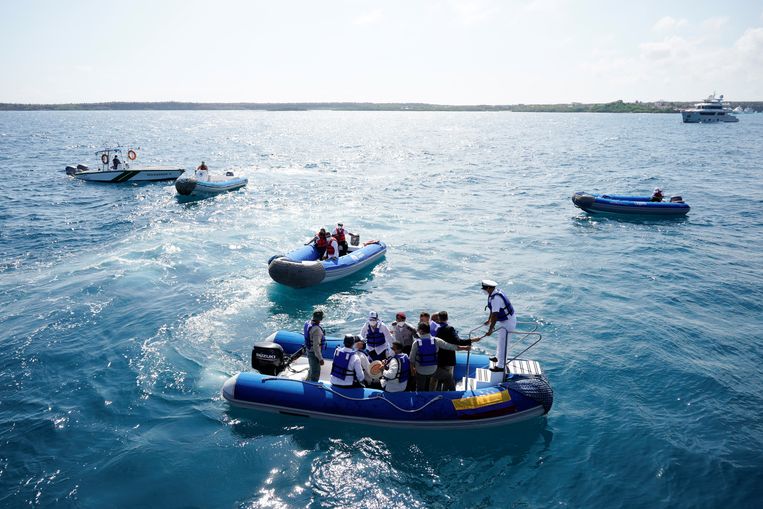
It is the first step in an ambitious plan by neighboring countries Ecuador, Colombia, Costa Rica and Panama to create a major protected corridor in the eastern Pacific. In that region, species threatened by industrial hunting and global warming should be able to migrate safely in the future. The countries agreed on this at the end of last year at the United Nations climate summit in Glasgow.
The marine reserve surrounding the Galapagos Islands (one of the largest in the world when it was established in 1998) is expanded from 138,000 to 198,000 square kilometres, and now joins the marine reserve around the northernmost island of Cocos in Costa Rica, another biodiversity hotspot.
Ecuadorean President Guillermo Laso signed the founding decree Friday on board a research vessel in the port of Puerto Ayora on Santa Cruz Island, in the presence of Colombian President Ivan Duque and former US President Bill Clinton.

The intent is that wealthy Western nations will help pay for the protected sea lane, the Hermendad (Brotherhood), by reducing the international debt burden on Ecuador and ultimately on other participating nations. It is still not clear if this will actually happen.
Expanding the marine reserve aligns with the United Nations’ ambition to provide at least 30 percent of the Earth’s surface (both land and oceans) with some form of natural protection by 2030. In April, firm agreements to this effect must be concluded at the United Nations Biodiversity Summit in Kunming, China.
The protected marine corridor (now about 1,000 km in length) aims to protect a number of endangered migratory species, such as whale sharks, hammerheads and leatherback turtles, which migrate between the Galapagos Islands and the area around Cocos Island. In the future, the passage is scheduled to extend into Colombian waters and Panama.

The shallow waters surrounding the Galapagos Islands themselves are teeming with sharks, tuna, and other fish species because the archipelago lies at a strategic intersection of warm and cold ocean currents, which provide the nutrient-rich waters. Marine species such as whale sharks flock there especially to breed.
The problem is that Hunters know that, too. Huge fishing fleets are active all year round around the islands. In particular, the Ecuadorean tuna fishermen, who take advantage of the 200 nautical-mile exclusive economic zone, but also the giant Chinese trawlers that have caught hundreds of giant squid over the past five years every summer for five years, as well as prey. on any fish venturing outside the marine reserve.
The plan to expand the Galapagos Marine Reserve was launched in 2020 by the predecessor of President Lasso Lenin Moreno. It was proposed to increase the reserve more than threefold to reach 446,000 square kilometers. But that would make three-quarters of the water unavailable to tuna fishermen, except for the pie in the Southwest. And that seemed to be a step too far for Lasso.

Zombie specialist. Friendly twitter guru. Internet buff. Organizer. Coffee trailblazer. Lifelong problem solver. Certified travel enthusiast. Alcohol geek.

